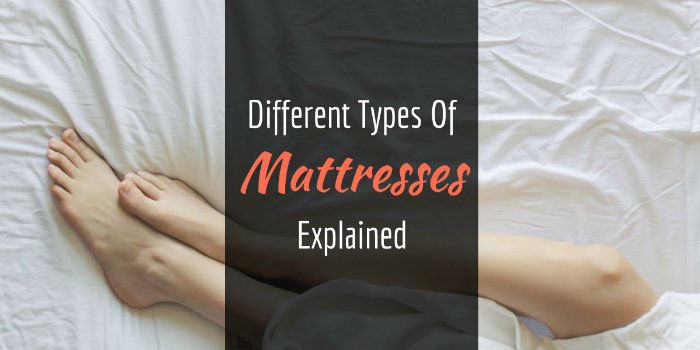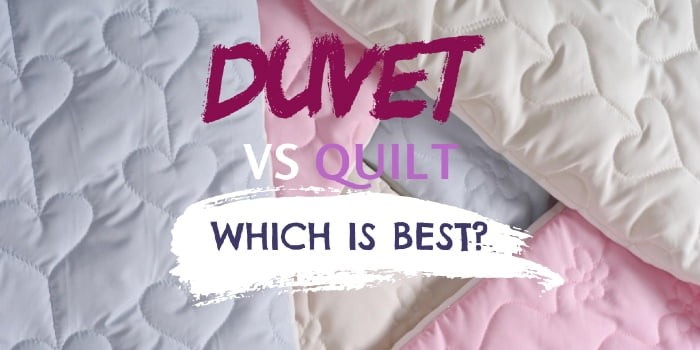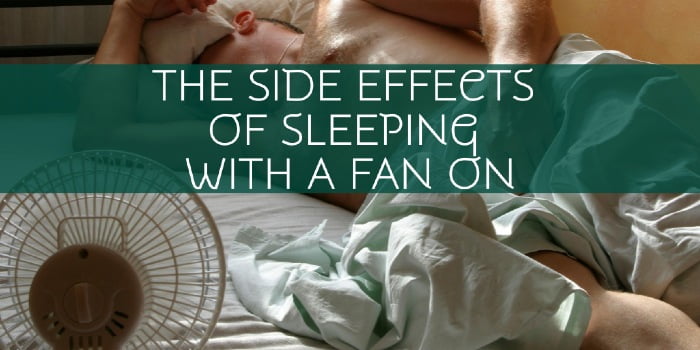Mattresses play an important role in making sure that you get a good night’s sleep.
This isn’t new information. According to The Sleep Council research, 83% of people agreed that mattresses have an important effect on how well they slept. Yet, so many people put up with mattresses that are old, non-supportive or just wrong for them.
If your sleep is struggling, you may need a new mattress to get the soundless night you deserve.
But mattress shopping isn’t as simple as getting a new mattress. There are many different types, built to cater to different people. None of us are the same after all, so it makes sense that our mattresses shouldn’t be.
If you’re searching for a new one, you shouldn’t get overwhelmed by the options and select the first, or cheapest, one out there. That’s like walking into a shoe store before running a marathon and selecting a pair of £1 flip flops next to the door. It’s just not going to cut it.
You need to pick the one that is going to improve your sleep to keep you happy and healthy. Now that’s worth the investment.
If you’re due another mattress or looking to upgrade your sleep, we’re here to make it easier by explaining the different mattress types you can buy and who they’re best suited to.
What are the different types of mattresses?
If you’re due another mattress or looking to upgrade your sleep, we’re here to make it easier by explaining the different mattress types you can buy and who they’re best suited to.
Innerspring
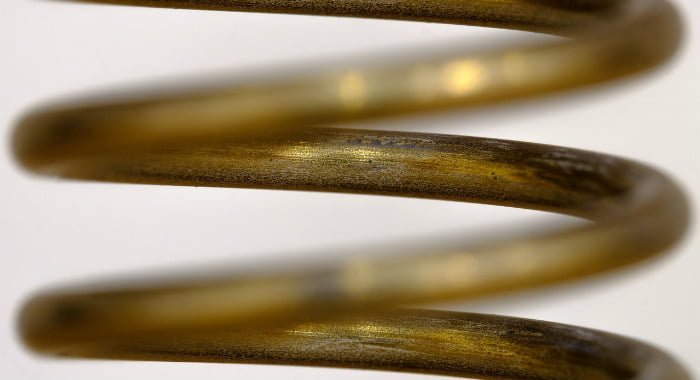
Innerspring mattresses are what comes to mind when you think about traditional mattresses. They’re made from several steel coils that compress when you put weight on them. When you remove the weight they ‘spring’ back into shape. Hence the name.
Having existed since the 1900s, these are often seen as the most common and cheapest option out there. But don’t let that make you think they aren’t any good. For a lot of people, Innerspring is the perfect mattress for a solid night’s sleep.
The downside is that innerspring mattresses don’t last as long. They wear out faster than other beds and are prone to squeaking and creaking as they reach the end of their life.
There are different subtypes of innerspring mattresses, including:
- Bonnell coils. These are the original coils used in innerspring beds, made from simple metal spirals in an hourglass shape.
- Offset. These are similar to Bonnell coils, but the tops and bottoms have flattened edges. This creates a hinging effect that better conforms to the shape of your body and is a much quieter option for those that are concerned about squeaky springs.
- Marshall or Pocketed Coils. Also known as wrapped or encased coils, these are coils that aren’t wired together in the frame. This allows them to work independently of each other, giving more support and motion isolation. So, if you’re sharing a bed with someone and they move, it won’t affect the part of the mattress that you are on.
- Continuous Coils. Instead of using individual coils, continuous coils create the entire bed from a single wire that’s bent into S-shapes. This is cheaper to produce, giving you more durability at a lower price point.
Top tip: If you’re looking for this type of mattresses, go for ones with a higher coil count. Generally speaking, the more coils there are – the higher quality the mattress.
It’s also worth paying attention to coil gauge, which tells you how thick the coil is. Thinner coils make a softer mattress, while thicker gauges make a firmer and more durable mattress.
Memory Foam

First invented by NASA to improve aircraft cushion safety, memory foam is everywhere – including pillows, blankets, furniture and even shoes.
If you want the sensation of sinking deep into a comfortable mattress, you’ll love the softness of the memory foam mattress. As you lay on it, it will take on your shape and contour around you. Once you leave, it will bounce back and ‘remember’ its original shape.
The extra cushioning of memory foam makes it perfect for those that need extra muscle support as they sleep or to help ensure that their spine is correctly aligned.
Memory foam mattresses have incredible motion isolation because it doesn’t rely on springs. This means that if someone moves or turns over their sleep, you will be unable to feel the effects.
The downside? Memory foam mattresses can be on the expensive side and won’t suit every budget.
You can get the same softness and comfort of memory foam elsewhere, for less. They just won’t have the same motion isolation as memory foam, so if you sleep with a partner you might want to consider the extra investment.
In addition, memory foam mattresses also trap heat. That’s because they need to be dense to comfortably support your weight, which limits the airflow through the mattress. To combat this, you can get mattresses which are injected with a cooling gel to help keep the temperature down during the night.
Top tip: Memory foam is the best mattress for side sleepers, or those prone to move about a lot during the night. Its soft springiness will keep you comfortable all night long, no matter what position you’re in.
Latex
If you’re looking for a natural and environmentally friendly bedding option, a latex mattress is the one for you.
Unlike a memory foam mattress, latex mattresses retain less heat, helping to keep you cool in the night. But in general, they offer similar contouring and comfort with slightly more bounce. It’s just a matter of preference which one you would prefer.
Latex mattresses are made from a byproduct of rubber tree sap. They are then manufactured in one of two ways:
- Dunlop mattresses, which pour the latex into the mould all in one go. This gives you a bed that’s softer on the top, making it perfect for those that want to sink into the mattress.
- Talalay mattresses, which are made when a vacuum sucks out all the air of the mould after it’s filled. Once done, the material is also frozen to add more stability, durability and a more consistent feel than the Dunlop latex mattresses.
Top tip: go for natural latex mattresses rather than cheaper synthetic latex. This is because the fillers that are blended with the latex makes the mattresses less durable, are worse for the environment and have even been found to be more carcinogenic.
Hybrid
If you can’t decide between sinking layers of comfort and the firm bounce of an innerspring mattress, the hybrid offers you the best of both worlds.
It’s made from a layer of coiled springs, topped with several layers of latex or memory foam.
The best part is that you can find a combination that perfectly matches your needs. This is perfect for those that want to cater a mattress to suit the exact specifications you need or wasn’t quite comfortable on the other types of mattresses on offer.
Top tip: before going for a hybrid bed, make sure you research individual companies and what they offer. Different companies will have different hybrid mattresses, meaning that you may have to shop around for a bit before you find the perfect one.
Our top-rated online mattresses:
| Mattress Brand | Type | Firmness | Our Rating | Review | Official Site |
|---|---|---|---|---|---|
 | Memory Foam | Medium-Firm | 9.7 | Read Review | Visit Website |
 | Memory Foam | Medium-Firm | 9.5 | Read Review | Visit Website |
 | Hybrid | Medium-Firm | 9.4 | Read Review | Visit Website |
Waterbeds

Although it may seem like waterbeds were an 80s fad, they actually have been around longer than innerspring mattresses and were originally invented to help patients relief bedsores.
Waterbeds can feel incredibly soothing and are extremely customisable, able to adjust the water flow to perfectly react to your body weight. Some beds will also have separate settings on each side, allowing you and a partner to adjust the bed to their exact preferences.
In addition, you can also set the temperature of the water. This means that you can keep the bed cool if needed, or even heat it up in the winter months for extra warmth.
However, waterbeds don’t offer the support you need during the night. Which means you’re more than likely to wake up with aching muscles. In addition, there’s always a chance for your bed to get a puncture and leak.
Top tip: If you’re planning on moving or are prone to redecorating a lot, a waterbed mattress isn’t for you. They are heavier than any other type of mattress and take a long time to set up.
Pillow Top
Pillow top mattresses are mattresses, usually innerspring mattresses, that are ‘topped’ with extra padding on top. Several inches thick, this padding can be made from all sorts of materials including cotton, foam, latex, wool or even memory foam.
The pillow top of a mattress can add extra comfort – but not for long. They are prone to degrading rather rapidly. Pillow top mattresses are also designed for lighter individuals, with heavier people not able to feel the comforting benefits as much.
Pro tip: if you’re looking for some soft support without investing into a more expensive memory foam mattress, pillow top mattresses are a great go-between. Just be warned that they don’t last as long, which may mean you’ll need to swap your mattress before long.
Adjustable beds
Adjustable beds are like regular beds, with the added functionality of being able to recline and adjust. Some can even give you a massage to help ease any muscle pain in your back and legs.
This is particularly useful for those who are bed-bound or prone to illness, allowing them to sit up and change positions while still resting.
Because of the added functionality of these beds, they are some of the most expensive ones that you can buy. So, if you’re thinking about getting it just to watch TV in bed, you might want to reconsider. Besides, if you’re struggling to sleep, removing the temptation to watch TV in bed will do wonders for your sleep.
Pro tip: if you’re budgeting for an adjustable bed, make sure to spare some money for maintenance fees. Because there are a lot of moving parts, adjustable beds may need repairing over the years to keep it in perfect working order.
Airbeds
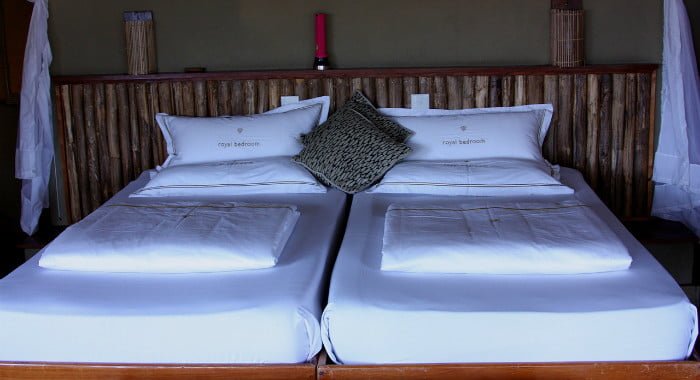
You can get high-quality air mattresses that, unlike the roll-up ones you might be used to, do offer more support and comfort in the night. This is because they’re also made with layers of foam, which help keep its shape and stop it from deflating during the night.
Similar to water beds, some mattresses also have controls on each side, allowing you to customise your mattress type to suit you and your partner.
Pro tip: if you need a cheap mattress that can pack away and be brought out exactly when you need it, this is for you. But if you want to fully take care of your sleep and health, we’d stay away from airbeds as your main, everyday mattress.
How often do you need to change your mattress?
Generally, mattresses need to be replaced every 8 years.
But they haven’t got a self-destruct timer on them that detonates when you hit this mark. This is just an average – but you need to pay attention to the signs that your mattress is past its best.
The top signs are:
- Squeaking or creaking noises on innerspring mattresses, which indicate that the coils are starting to become worn-out and broken.
- Any aches or pains that you might have in the morning, especially in your lower back. This shows that your mattress is no longer supporting your weight.
- It takes you a long time to go to sleep.
- You don’t feel comfortable.
- You’re waking up with itchy eyes, a runny nose or a cough, which indicate that your mattress has become infested with dust mites.
If you’re not sure, you can also take this bed MOT to see if it’s time for you to upgrade.
Which Mattress Is Best For You?
Answer 4 simple questions below to get a personal recommendation on which mattress may work best for you:
How do I know which mattress is right for me?
Unfortunately, there’s no simple way to decide which mattress type is right for you.
There are tests you can take (like the one above) to give you a clearer idea of your mattress type, but ultimately the only way to know for sure is to test them yourself.
Whether you need a soft or hard mattress is all about preference and what feels the most comfortable for you.
If you’re experiencing a lot of back or muscle pain, it’s usually recommended to go somewhere in the middle. That’s because soft mattresses allow you to sink, preventing you from getting the support you need.
In contrast, firm mattresses can put too much pressure on your head, shoulders and lower back – making the pain worse.
The best way to find your perfect mattress is to head down to your nearest store and start testing them. Once you’ve found the one, lay on it for at least 20 minutes and note how you’re feeling. If you feel comfortable and relaxed without any soreness or pain, then that mattress is a winner.
All that’s left is for you to take it home and head into dreamland!
Top-Rated Online Mattresses:
| Mattress Brand | Type | Firmness | Our Rating | Review | Official Site |
|---|---|---|---|---|---|
 | Memory Foam | Medium-Firm | 9.7 | Read Review | Visit Website |
 | Memory Foam | Medium-Firm | 9.5 | Read Review | Visit Website |
 | Hybrid | Medium-Firm | 9.4 | Read Review | Visit Website |
